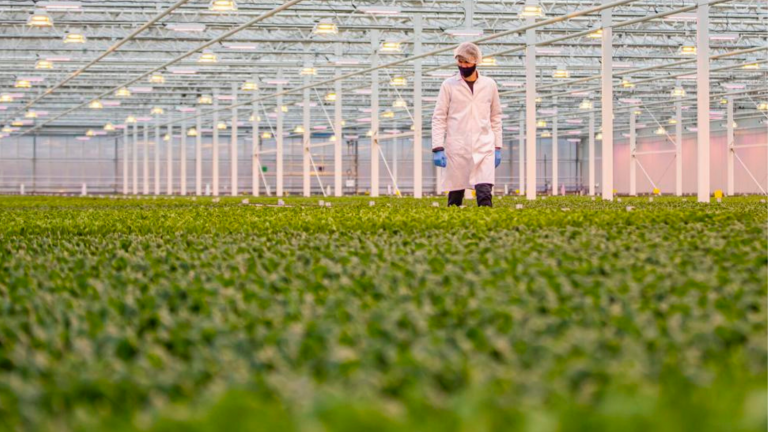SOUTH BEND, Ind. (AP) — It’s a chilly, wet and windy day — enough to remind us that winter still isn’t too far in the rearview mirror.
But inside a new six-acre building on West Calvert Street in South Bend, Matt Gura is keeping a close watch over a sea of baby plants that fill a greenhouse about the size of two big-box retailers, or 174,000 square feet.
It’s like a warm day in early summer inside the building, which uses computers and monitors to control light, liquid nutrients, temperature, humidity and even plant-loving carbon dioxide.
Gura, director of operations at Pure Green Farms — a hydroponic indoor farm on the city’s southwest side — touts it as the “most technologically advanced leafy green greenhouse in the world.”
“And it’s in South Bend,” he says.
Though it might seem odd to build a massive indoor farm in northern Indiana — considering the cold weather and the perma-cloud that seemingly hangs over the region each winter — leaders at South Bend-based Ceres Partners, an agricultural investment firm, studied the project for years.
They believe there is an opportunity to disrupt the lettuce trade, which is largely dominated by growers in California who ship products to markets in the Midwest.
There’s more sunlight here than most of us realize, and the fact that it doesn’t get too hot in the summer means that the cost of trying to keep the building cool won’t be out of line, Gura said.
A combination of LED and high-pressure sodium lights will supplement the light needs of the plants, and there’s an automated shade that can be used to cut down on light coming in or out of the greenhouse as needed.
In the winter, the indoor farm will use offal heat from the nearby South Bend Ethanol plant, and discussions are underway to possibly use carbon dioxide produced by the facility if it makes economic sense for both businesses.
Ceres also liked the location because it’s near its headquarters near the University of Notre Dame as well as major transportation links that will be crucial to getting the leafy greens produced by Pure Green Farms to grocers, restaurants and other customers throughout the region, said Brandon Zick, chief investment officer for the firm.
“There’s 55 million people within a 300-mile radius,” said Joe McGuire, a seasoned produce distribution executive who was brought in to serve as CEO of Pure Green Farms. “There’s 75 million people within 400 miles.”
That distance gives Pure Green a significant shipping advantage over traditional leafy green producers that are located in California, Arizona and other far-away locations.
By the time lettuce is harvested and processed in California, for example, it might take 10 days to reach store shelves in the Midwest. Conversely, the romaine, arugula and leaf lettuces grown at Pure Green could be on store shelves in a couple of days or even less.
“We think there’s going to be strong demand for fresher produce that’s grown in the market,” McGuire said.
The first shipments have gone out to Kroger stores in Indiana, and it won’t be long before Pure Green is available at Martin’s Super Markets and other grocers.

